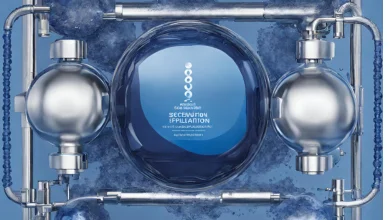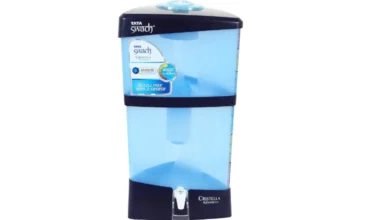What is Total Dissolved Solids (TDS)

Water is a fundamental element for sustaining life, and its quality is crucial for human well-being. Total Dissolved Solids (TDS) represent the cumulative concentration of various inorganic and organic substances dissolved in water. As water flows through natural and man-made environments, it picks up minerals, salts, metals, and other compounds, contributing to its overall TDS.
Defining TDS in Water:

TDS is typically measured in parts per million (ppm) and includes substances like calcium, magnesium, sodium, potassium, bicarbonates, sulfates, chlorides, and various other ions. Understanding the composition of TDS is essential in evaluating water quality.
Sources of TDS in Drinking Water:
The sources of TDS are diverse and can include natural processes such as weathering of rocks and soil erosion, as well as human activities like agricultural runoff, industrial discharges, and municipal water treatment processes. Identifying the sources of TDS is crucial in determining the appropriate water purification strategy.
In this section, we will delve into the basic concepts surrounding TDS, providing readers with a foundational understanding of the role TDS plays in water quality. By comprehending the composition and sources of TDS, individuals can make informed decisions when selecting a water purifier that effectively addresses the specific TDS levels in their drinking water.
The Significance of TDS in Water Quality
Impact on Taste and Odor:
The level of Total Dissolved Solids (TDS) significantly influences the taste and odor of water. Low TDS levels can result in a flat or insipid taste, while higher levels might cause a distinct taste or odor, often described as salty, metallic, or bitter. Understanding this impact is crucial, as it helps consumers recognize the role TDS plays in their water’s sensory properties.
Health Implications of High TDS Levels:
While TDS in itself isn’t necessarily harmful, elevated levels may indicate the presence of contaminants that could pose health risks. Excessive TDS can lead to an increased concentration of specific elements like lead, arsenic, or fluoride, potentially exceeding safe limits. It’s essential to evaluate TDS levels in relation to health guidelines to ensure water safety.
By exploring the impact of TDS on taste, odor, and potential health implications, consumers gain insight into why monitoring and regulating TDS levels in drinking water is vital. This understanding forms the basis for selecting appropriate water purification technologies capable of effectively managing TDS while maintaining water quality and safety.
How TDS Water Purifiers Work
Filtration Mechanisms:
TDS water purifiers employ advanced filtration mechanisms to reduce and remove dissolved solids from water. One prevalent technology is Reverse Osmosis (RO), which utilizes a semi-permeable membrane to separate contaminants from water molecules based on their molecular size. RO systems are effective in removing a wide range of impurities, including minerals, salts, and heavy metals.
Selecting the Right Purification Technology:
In addition to RO, TDS water purifiers may utilize other purification technologies such as Ultraviolet (UV) and Ultrafiltration (UF). UV purifiers use ultraviolet light to deactivate and eliminate bacteria, viruses, and other microorganisms. UF technology, on the other hand, employs a fine membrane to filter out particles and microorganisms. Understanding the strengths and limitations of each technology is crucial in choosing a purifier that aligns with specific water quality needs.
This section provides a comprehensive overview of the various filtration mechanisms employed by TDS water purifiers. By understanding how these technologies work, consumers can make informed decisions about the most suitable purification method for their water sources, ensuring the removal of dissolved solids and the delivery of safe, clean drinking water.
Factors to Consider in Choosing a TDS Water Purifier
Water Quality Assessment:
Before selecting a TDS water purifier, it is essential to conduct a thorough assessment of the water quality in your area. Water quality testing can identify the specific contaminants and TDS levels present. This information is crucial in determining the most effective purification technology and capacity needed for optimal results.
Flow Rate and Purification Capacity:
Consider the flow rate and purification capacity of the TDS water purifier, which are key factors in ensuring a continuous supply of purified water. The flow rate indicates how quickly the purifier can produce clean water, while purification capacity specifies the volume of water the purifier can treat over a given period. Matching these specifications to your household’s water usage is vital for efficient and effective water purification.
This section guides consumers through the initial steps of the decision-making process, emphasizing the importance of understanding local water quality and evaluating the practical aspects of purifier performance. By considering these factors, individuals can narrow down their options and choose a TDS water purifier that aligns with both the specific characteristics of their water source and the practical needs of their household.
How to use TDS Meter
- Collect a Water Sample:
- Use a clean container to collect a representative sample of the water you want to test.
- Turn On the TDS Meter:
- Ensure the TDS meter is clean and calibrated according to the manufacturer’s instructions.
- Turn on the TDS meter.
- Immerse the TDS Meter:
- Immerse the TDS meter probe into the water sample. Ensure that the probe is fully submerged.
- Wait for Stabilization:
- Allow the TDS meter to stabilize. This usually takes a few seconds to a minute, depending on the meter.
- Read the Display:
- Once stabilized, the TDS meter will display the TDS level in ppm or mg/L.
Using Laboratory Testing:
If you don’t have access to a TDS meter, you can also send a water sample to a laboratory for testing. The laboratory will use more sophisticated methods to analyze the water and provide you with TDS measurements.
Understanding the Results:
- Low TDS (0-50 ppm): Generally indicates soft water with few dissolved solids.
- Moderate TDS (50-500 ppm): Common for most water sources.
- High TDS (500-1,000 ppm): Indicates moderately hard water with increased mineral content.
- Very High TDS (1,000+ ppm): Suggests hard water with a significant concentration of dissolved solids.
Note:
- TDS meters measure the conductivity of the water, and the reading represents the overall concentration of dissolved ions.
- TDS meters do not identify specific contaminants. For a detailed water analysis, additional tests may be required.
Always follow the specific instructions provided with your TDS meter for accurate measurements, and consider consulting with a water quality professional for a more comprehensive analysis if needed.
TDS Meter Readings and Corresponding pH Values
| TDS (ppm) | pH Value |
|---|---|
| 50 | 7.0 |
| 150 | 6.8 |
| 300 | 7.2 |
| 500 | 6.5 |
| 800 | 7.5 |
| 1000 | 6.3 |
| 1200 | 7.8 |
| 1500 | 6.0 |
In this table, the TDS values are measured in parts per million (ppm), and the pH values represent the acidity or alkalinity of the water. It’s important to note that there is no strict correlation between TDS and pH; they measure different aspects of water quality. Additionally, these values are fictional and should not be used as a reference for any specific water source without proper testing.






